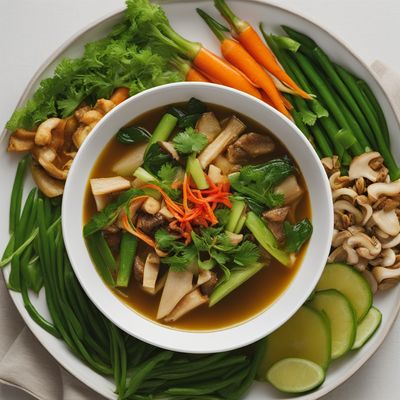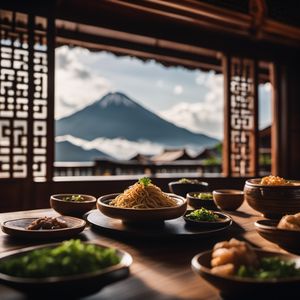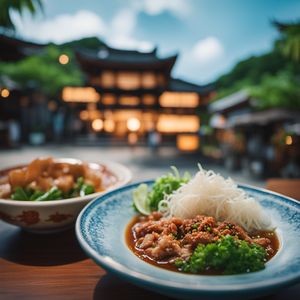
Dish
Nabemono
Hot Pot
Nabemono typically consists of meat, vegetables, and noodles that are cooked in a broth at the table. The dish is often served in a large pot and is shared among the diners. The broth is made with dashi, soy sauce, and mirin, and is often flavored with ginger or garlic. Nabemono is a hearty and comforting dish that is often served during the winter months.
Origins and history
Nabemono has been a part of Japanese cuisine for centuries. It is believed to have originated from the Edo period in the 17th century. Nabemono was originally a dish served in the homes of the samurai class, but it eventually became popular among the general population.
Dietary considerations
Nabemono is a low-carb and high-protein dish. It is gluten-free and dairy-free. However, some variations may contain soy sauce or other ingredients that may cause allergic reactions in some individuals.
Variations
There are many variations of Nabemono depending on the region and the ingredients available. Some variations include using different types of meat or vegetables, adding spices or herbs, or using different types of noodles.
Presentation and garnishing
Nabemono is traditionally served in a large pot and garnished with fresh herbs and vegetables. The presentation is simple yet elegant.
Tips & Tricks
To achieve the best results, it is important to use fresh and high-quality ingredients. The cooking time may vary depending on the size and type of ingredients being cooked. It is important to monitor the dish closely to prevent overcooking.
Side-dishes
Rice or noodles are common side dishes served with Nabemono. These side dishes complement the flavors of the broth and the ingredients.
Drink pairings
Green tea or sake are common drink pairings served with Nabemono. These drinks help to cleanse the palate and enhance the flavors of the dish.
Delicious Nabemono recipes
More dishes from this category... Browse all »

Agemono
Japanese cuisine

Ahima’a
Pacific Northwest cuisine

Al dente
Italian cuisine

Alla creta
Italian cuisine

Asador criollo
Argentinian cuisine

Baoshao
Chinese cuisine

Barbacoa
Mexican cuisine

Barbecue
American cuisine




